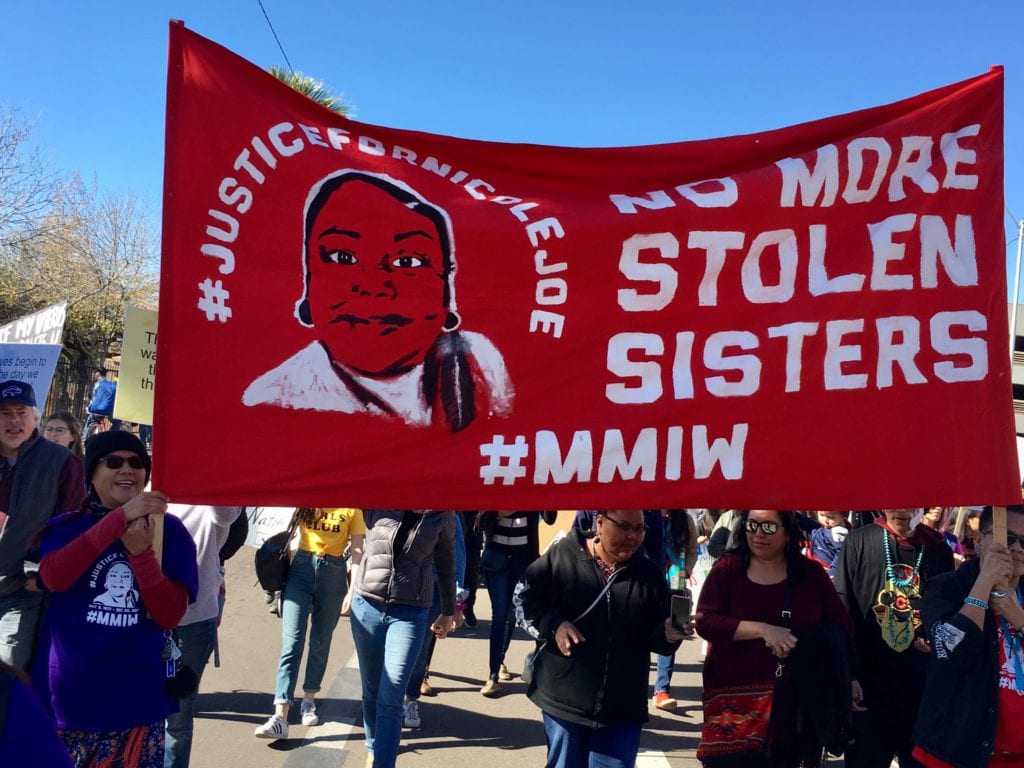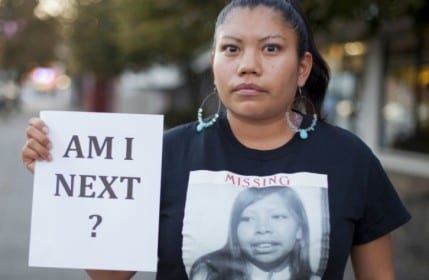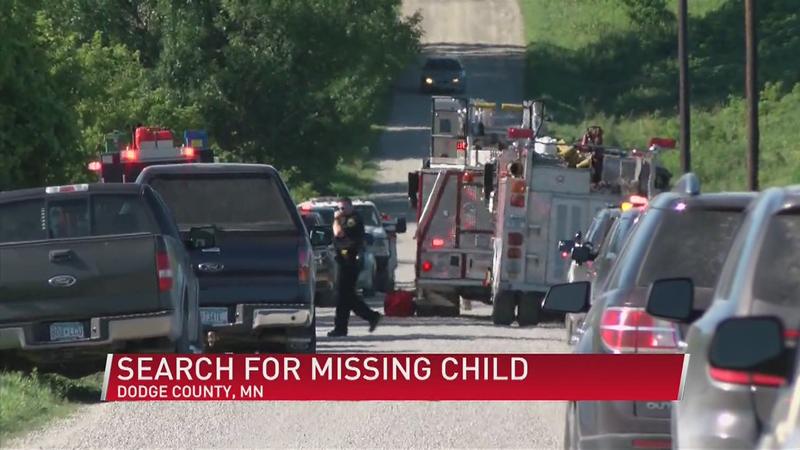
by admin_lauth | Mar 10, 2019 | Criminal Investigation, Private Investigations News, Tips & Facts
 Even if you’re not a fan of Fox’s successful prime time drama, Empire, you’re likely aware of the name Jussie Smollett by now. Smollett has come under fire in the media and on the internet for his allegedly false account of a racially-motivated attack against him in January, where he alleged two men attempted to strangle him and pour bleach on him. When the story first broke, it was shaping up to be a watershed moment in conversations about how the current administration is affecting race-relations throughout the country. After law enforcement conducted an investigation into his version of events, they’ve released statements that Smollett may have hired the men responsible to help him stage the attack. The case has created divisive new conversations about the United States’ current political climate, but is also prompting career investigators to highlight the importance of thorough and diligent fact-finding in the early stages of any investigation—especially within corporations.
Even if you’re not a fan of Fox’s successful prime time drama, Empire, you’re likely aware of the name Jussie Smollett by now. Smollett has come under fire in the media and on the internet for his allegedly false account of a racially-motivated attack against him in January, where he alleged two men attempted to strangle him and pour bleach on him. When the story first broke, it was shaping up to be a watershed moment in conversations about how the current administration is affecting race-relations throughout the country. After law enforcement conducted an investigation into his version of events, they’ve released statements that Smollett may have hired the men responsible to help him stage the attack. The case has created divisive new conversations about the United States’ current political climate, but is also prompting career investigators to highlight the importance of thorough and diligent fact-finding in the early stages of any investigation—especially within corporations.
Conducting an investigation with unimpeachable integrity is very similar to building a structure ready to withstand natural disasters. Laying a firm groundwork from the moment of the intake narrative will set an impregnable foundation allowing investigators and support staff to develop strong leads. Investigators must be prepared to ask every question—albeit inane or delicate—in order to ensure they are getting all of the existing, relevant information on the case. This is a process called fact-finding, in which a victim or witness’s statement is documented and entered into record, thereby allowing investigators to thoroughly vet every aspect of their statement. Were they in fact present when the incident took place? Can they accurately describe the alleged perpetrator? Is their story consistent across multiple iterations?
As is the case with any investigation, operatives are racing against the clock. With time, witnesses’ memories fade and witnesses themselves disappear, having relocated or simply left town. As time goes by, evidence is eroded, eventually disappearing, eliminating the leads they might have developed. This is why thorough fact-finding is so important, because investigators who are operating off false or inaccurate leads can lose days or weeks on a case as they chase a lead that will eventually come to no end. While investigators chase those dead leads, the truth about what actually occurred dissolves into obscurity.
Investigators in the Smollett case were able to vet his account of events and discover there may be more to the story than meets the eye. The case was not an isolated incident of allegedly false accusations having major consequences for the parties involved. Regardless of why an individual would make false accusations—whether it was with malice or simply a mistake—these circumstances could occur in many areas of life that could be devastating to both individuals and corporations.
Allegations of misconduct in the workplace immediately come to mind. Whether it’s allegations of theft or sexual harassment, these are the kinds of cases where it’s crucial to have the intake narrative well-documented, with detailed first accounts from all principles on the who, where, when, how, and why in any series of events. Cases regarding misconduct in the workplace have a higher chance of being litigated following the completion of any investigation, usually through civil and wrongful termination lawsuits.
A thorough and diligent private investigator is an invaluable asset to both sides of any investigation, as they are an independent third party and do not have a stake in the outcome of the investigation. Any fact-finding performed by an objective third party stands up to a much higher degree of scrutiny by the opposition. Investigators who are directly employed by any parties in either side have a lot to lose if their employer faces ruin following a lawsuit.
Which brings us to another issue in handling the fact-finding internally. Internal investigators can have a variety of qualifications depending on the corporation’s procedure. It’s true some businesses have licensed investigators on retainer to assist in regular operations, like a business who hires a private investigator to run a background check on a candidate for an upper management position. However, depending on the size of the company, the investigating party in some corporate crises is just the head of Human Resources—who might then be supervising other subordinates to do the legwork. Human Resource managers are invaluable employees who keep businesses running like clockwork, but this does not necessarily qualify them to conduct an investigation in every possible scenario, such as investigations requiring surveillance, undercover work, or properly documenting any evidence that might be recovered. This kind of oversight can have disastrous consequences in the later stages of an investigation, or even in a court of law. The opposition’s case is strengthened when there is evidence an internal investigator has not done their due-diligence.
Corporations of all sizes, trades, and levels of notoriety experience crises throughout their history. When disaster strikes and the stakes are high, it’s important to retain the services of a qualified, licensed, private investigator to begin an investigation. It’s not uncommon for a private investigator to be hired on after internal investigators have already made an attempt. It’s best to start strong, with due-diligent service from a seasoned external investigator to lay an impenetrable foundation for a thorough investigation.

by admin_lauth | Oct 25, 2018 | Criminal Investigation, Missing Person
 Indigenous women in this country are more likely than any other group to be raped or murdered. The salt in this gaping wound is they are also least likely to see justice. These are very passive terms, but there are no others, because the amount of data available about violent crimes against indigenous women is dwarfed in comparison to those of other groups. Last year, there were 5,646 Native American women entered into the National Crime Information Centre (NCIC) as missing. As of June 2018, there had been 2,758 reported missing. Many of their families have claimed no one bothered to investigate.
Indigenous women in this country are more likely than any other group to be raped or murdered. The salt in this gaping wound is they are also least likely to see justice. These are very passive terms, but there are no others, because the amount of data available about violent crimes against indigenous women is dwarfed in comparison to those of other groups. Last year, there were 5,646 Native American women entered into the National Crime Information Centre (NCIC) as missing. As of June 2018, there had been 2,758 reported missing. Many of their families have claimed no one bothered to investigate.
The jurisdictional issues surrounding cases occurring on reservations is a giant knot of Christmas lights; difficult to unravel, involving federal, state, and tribal law. It can sometimes be unclear to investigating bodies exactly who should be looking for answers. These cases become stillborn while law enforcement plays jurisdictional musical chairs—trails go cold, witnesses disappear, or develop amnesia, evidence is eroded. These women are not likely to be found, nor are their cases likely to be prosecuted. The disappearance of Ashley Loring HeavyRunner is a chilling example. She went missing from the Blackfeet Reservation in Montana in June of 2017. Her sister begged for help from the Indian Bureau of Affairs, and the FBI did not investigate until March of 2018, nine months later.
Despite the fact tribes on the reservations are guaranteed self-government by the Constitution, the more serious crimes fall under the jurisdiction of the FBI. The FBI is not obligated to notify them if a member of their tribe is reported missing or murdered. On top of that, the crimes do fall under tribal jurisdiction are placed in the hands of a woefully understaffed force. “A lot of times it doesn’t go beyond the missing persons report,” said Marita Growing Thunder, a 19-year-old murdered and missing indigenous women (MMIW) activist.
 In fact, the work being done to preserve information about murdered and missing indigenous women is being performed in large part by private citizens, like Annita Lucceshi, a PhD student at the University of Lethbridge in Southern Alberta. “I realised how difficult it is to get a sense of just how many murdered and missing women there are because it changes constantly and there is so little official information,” Annita told Independent. The database she has compiled goes back a little over a century, and she described her experience with obtaining accurate information to be heavy labor. “The police are not helpful. Typically, I get no response at all. If I do, they say they don’t collect the data, or that they won’t be able to pull that information.”
In fact, the work being done to preserve information about murdered and missing indigenous women is being performed in large part by private citizens, like Annita Lucceshi, a PhD student at the University of Lethbridge in Southern Alberta. “I realised how difficult it is to get a sense of just how many murdered and missing women there are because it changes constantly and there is so little official information,” Annita told Independent. The database she has compiled goes back a little over a century, and she described her experience with obtaining accurate information to be heavy labor. “The police are not helpful. Typically, I get no response at all. If I do, they say they don’t collect the data, or that they won’t be able to pull that information.”
It gets worse. In preparation for his film Wind River, director Taylor Sheridan paid a handful of lawyers to compile a statistic regarding murdered and missing indigenous women. After three months, they came back empty-handed, but had learned some disturbing facts along the way. As recently as 2013, sexual assault of a Native woman by a non-Native could not be prosecuted because it was a state crime on federal land. Natives accused of crimes against non-Natives can be prosecuted twice, by the federal government and by tribal police. This was rectified when the Violence Against Women Act gave criminal jurisdiction over non-indigenous people who commit sexual violence against Native American women.
 In 2015, the Department of Justice announced they were developing the Tribal Access Program for National Crime Information (TAP) so tribes can enter and view information in the federal NCIC database, thereby streamlining muddled communications between investigating bodies. Ten tribes were selected for the beta-test of this new system, but as of 2016, some had not received their TAP terminals. Once again, the wheels of justice turn at a glacial pace for missing and murdered indigenous women.
In 2015, the Department of Justice announced they were developing the Tribal Access Program for National Crime Information (TAP) so tribes can enter and view information in the federal NCIC database, thereby streamlining muddled communications between investigating bodies. Ten tribes were selected for the beta-test of this new system, but as of 2016, some had not received their TAP terminals. Once again, the wheels of justice turn at a glacial pace for missing and murdered indigenous women.
by admin_lauth | Oct 4, 2018 | Corporate Investigations, Criminal Investigation, Tips & Facts
With sexual assault allegations dominating recent news cycles, Americans are further developing their figurative picture of what it’s like for a survivor of sexual assault to come forward with allegations against their abuser. When a survivor comes forward, they are subjected to scrutiny, libel/slander, and fierce criticism from private citizens like themselves about how they should have handled the situation. Knowing that, it’s not incomprehensible that rage continues to fester in the communities affected by the Larry Nassar investigation and the USA Olympic Gymnastics organization’s glacial response time to allegations against him.
Nassar is currently in federal prison serving a 60-year sentence for possession of child pornography, which is a blip compared to the sentences he received from the judges in Ingham and Eaton County, both ranging from 40 years to as long as 175 years. More than 330 women and girls have come forward claiming to be a survivor of Nassar’s abuse. His sentence came after Nassar pled guilty to possession of child pornography and sexual misconduct with the young gymnasts he treated at the famous Karolyi Ranch in Texas. Sarah Jantzi was Maggie Nichols’ coach at the time—Maggie’s allegations of abuse against Nassar are considered some of the first in the string of gymnasts who came forward after the Nassar investigations became public. Jantzi reported her concerns about Nassar to USAG after she overheard Maggie and another gymnast discussing whether Nassar’s practices were considered “normal.”
Nassar treated Maggie for a knee injury, during which he insisted on examining her groin area. He did not wear gloves, and took pains to close the door and the blinds before beginning the examination. Jantzi also contacted Maggie’s mother, Gina Nichols, who told IndyStar, “It was nothing you’d expect in a million years. I mean, I’m sending my minor daughter the last four years, one week a month, down to the Ranch to train. So proud. She’s on the USA team. Working so hard. Our family making all these sacrifices. It’s just—you wouldn’t even think this is something that would have ever happened.”
USA Gymnastics officials waited a jaw-dropping 41 days to report Nassar to police after the first hearing regarding Jantzis concerns. It’s a bad look, and to make matters worse, the organization did not inform Michigan State, where Nassar also worked with young athletes until late summer in 2016. The notoriety of some of the survivors drew a great deal of media attention when the investigation became public, and while much of the country currently associates mention of the USAG with sexual abuse allegations, the reality is this culture of silence and abuse is not unique to the USA gymnastics team. Katherine Starr, a former Olympic swimmer and abuse victim who founded Safe4Athletes, a nonprofit organization working to address and prevent abuse told the Chicago Tribune, “We’re hearing all about gymnastics, but the problems in gymnastics are equally as prevalent in every other sport…I think people are starting to understand the complexity of this, and how this stays in the system…It stays in the system because of governance, because of the people in charge.”
Just this week, two divers for the USA Diving team have filed lawsuits against their former coach, John Wingfield, claiming his academy ignored complaints against a coach under his supervision, Johel Ramirez Suarez. The divers claim the organization had knowledge of Suarez’s alleged predation prior to Suarez sexually assaulting them both. Suarez was eventually arrested in Hamilton County, Indiana in November of 2017 and was subsequently charged with 32 felony counts of child sexual abuse, earning him a spot on the USA Diving teams banned list. Even after USAG had reported Larry Nassar to the FBI (13 months after the initial hearing), they still did add his name to that list.
In a review of documents and data pertaining to the organizations governing the sports, the Washington Post revealed since 1982, there have been over 290 coaches and officials affiliated with American Olympic sports who have been accused of sexual misconduct. That number covers 15 different Olympic sports, and includes both individuals who have been convicted of their crimes and individuals who have never had to answer for the allegations made against them. The figure averages out to one official being accused of sexual misconduct every six weeks for over 35 years. If the Nassar case tells us anything about how Olympic organizations might have typically responded to abuse allegations, it’s not a mystery how a culture of abuse and silence was cultivated as many attempts to investigate the abuse were swept under the proverbial AstroTurf.
Survivors like Aly Raisman have called out USA Gymnastics, claiming that they were more concerned about guaranteeing gold medals that protecting their young athletes. “I don’t think that they cared at all. I think at first it was to ‘get him away,’ Nassar away from the Olympians, but when it was about a 10-year-old, or a 15-year-old, or a 20-year-old in Michigan they didn’t care,” Raisman told the Indy Star. That much is apparent from emails between Nassar’s legal counsel and USAG officials, in which the Olympic organization clearly took part in the effort to conceal the Nassar investigation from athletes and from the public. Aly Raisman also told IndyStar that she received a text message from the former USA Gymnastics President, Steve Penny in July of 2017, advising her that the first priority was keeping the investigation “quiet and confidential.” It would have saved many survivors like Kaylee Lorincz a great deal of pain if the organization had made allegations against Nassar public. While under investigation, Nassar treated Lorincz twice after Sarah Jantzi notified USAG about her concerns. Lorincz says that she was abused both times by the sports medicine “celebrity,” and lamented, “It could have saved many more if they could have just stopped him in 2015. It makes me angry and upset because it could have prevented so much.”
At this time, it’s difficult to determine the motives of the USOC and how they reacted to allegations against Nassar and other officials who have been accused of sexual misconduct with athletes. Did they do so out of ignorance or apathy? Or was this a focused effort to erode investigations into these allegations all together? A recent Washington Post article called for law enforcement and state attorneys to open investigations into other USA Olympic teams and organizations. John Manly, an attorney who represents many survivors of Nassar’s abuse told the publication:
“The most amazing thing about this evolution is that no one has executed a search warrant on USA Gymnastics and no one has executed one on the USOC…If anyone deserves a search warrant given the evidence to date, it’s them. If you believe these Olympic gold medalists, then [USA Gymnastics] violated the reporting laws in Indiana. I mean, why haven’t you done something?”

by admin_lauth | Aug 7, 2018 | Corporate Investigations, FMLA Fraud Evergreen, FMLA Investigations, Fraud, Insurance Fraud, Investigations, Theft, Tips & Facts, Workplace

FMLA fraud can devastate a company, but companies should protect the integrity of their investigations to protect themselves.
The Family and Medical Leave Act (FMLA) provides working families balance to their lives when their circumstances take a turn. Whether it’s caring for new life in the household—such as a newborn or a foster child—or to care for an ailing relative, the 1993 act protects employees from being terminated from their jobs when they must take an extended absence for a specific set of reasons. However, abuses of FMLA are extremely common in the American workforce. While suspicions of FMLA abuse should be taken seriously by employers, companies must conduct thorough and unbiased investigations before terminating any employees. Businesses who do not follow protocol can open themselves up to expensive litigation.
In addition to protecting employees from termination during an extended leave, FMLA also requires their various insurance coverage remain in effect. This protection can be guaranteed for up to 12 weeks. According to the Department of Labor:
FMLA is designed to help employees balance their work and family responsibilities by allowing them to take reasonable unpaid leave for certain family and medical reasons. It also seeks to accommodate the legitimate interests of employers and promote equal employment opportunity for men and women.
FMLA applies to all public agencies, all public and private elementary and secondary schools, and companies with 50 or more employees. These employers must provide an eligible employee with up to 12 weeks of unpaid leave each year for any of the following reasons:
- the birth and care of the newborn child of an employee;
- placement with the employee of a child for adoption or foster care;
- to care for an immediate family member (spouse, child, or parent) with a serious health condition; or
- medical leave when the employee is unable to work because of a serious health condition.
The use of FMLA within these guidelines (with some exceptions) is designed to protect hard-working men and women from losing their jobs when their family suddenly requires their attention. Life can change so fast, and employees can rest easy knowing their jobs will be waiting for them when they are able to return in top-performing condition.
According to Charlie Plumb, an attorney who represents clients in all phases of management, abuse of this protection should be investigated, provided the employer has an “honest suspicion.” He goes on to say, “This honest suspicion standard is really intended to protect the employer against a claim they are interfering against FMLA leave and/or being retaliatory.”
A familiar scenario is one where an employee has been granted leave under FMLA for a serious illness or injury. The employer then happens to see posts from the employee on social media having fun out with friends, exercising, or driving. The employer might think, “If they’re well enough to do these things, they must be well enough to work.” While this might sound like an open and shut case from the employer’s point of view, Allen Smith of The Society of Human Resources Management, provides an example where this philosophy proved problematic:
“Joan Casciari, an attorney with Seyfarth Shaw in Chicago, said she handled a case that involved an employee who was put on FMLA leave for depression. The employer later discovered, through surveillance, she was doing Christmas shopping with her family and having a wonderful time. But her doctor confirmed “retail therapy” was consistent with her condition and the fact she could shop did not mean she did not require FMLA leave.”
Luckily for the employer in this anecdote, they did their due diligence and consulted a medical professional who could corroborate the circumstances of her FMLA qualifications. Some employers are far hastier. When employers do not conduct comprehensive and objective investigations into suspicious FMLA claims, they can open themselves up to lawsuits that can be devastatingly expensive and a public relations nightmare.
Vigilance of adherence to the guidelines of FMLA becomes manageable when Human Resource directors keep an eye out for certain patterns of behavior, such as absence patterns, especially when they coincide with non-work events (holidays or something personal that they may have mentioned in the past). Employers should also be suspicious of absences directly contradicting any medical certification in frequency or duration.
Once an employer has a reasonable suspicion of FMLA abuse, they should most certainly investigate. However, internal investigations into these kinds of abuses can be very messy for Human Resources and upper management. The aforementioned scenario involving “retail therapy” could have been a disaster if the company had not done their due diligence. Some employers are not so diligent.
Another scenario involving a maintenance worker at a nursing home and rehabilitation center panned out much differently. The employee in question noticed his superior was exhibiting a pattern of absence he found suspicious. He began reviewing surveillance footage to compare to his own personal log of her comings and goings in order to prove she was abusing company time. After discovering the independent investigation, the superior served a series of performance adjustments to the employee before terminating him. The termination came after the employee had submitted an FMLA request. The court found the dates of his termination tied in too closely with his request for FMLA, allowing the employee to take the case to trial.
Scenarios like these are why Human Resources and management should 1) be vigilant of FMLA abuse, and 2) conduct a thorough and unbiased investigation in order to ensure the company is protected from litigation. Many companies choose to handle investigations internally in order to minimize the amount of exposure. However, internal investigations spearheaded by current members of staff, will not only disrupt daily operations, but can also have negative effects like the case of the nursing home. The employee conducting his own investigation may have had honest suspicions of his superior’s misconduct, but he was certainly not a unbiased source to investigate.
Private investigators are probative routes often overlooked when a company has an internal investigation. There are many circumstances under which companies do not want to give up control over an internal investigation, and a private investigator is the definition of a third-party. However, the objectivity of a private investigator is the number one reason why companies should consider them as an option. The personal biases of the persons involved in the previous examples caused the investigation to go south. As an independent contractor, a private investigator’s only loyalty is to the truth. They are vital to ensuring an investigation is a transparent expedition for the truth. This goes a long way towards protecting a business from subsequent lawsuits or bad press.
When handling an investigation internally, employers are limited to what surveillance they can attain from their own equipment or social media. Private investigators are licensed to track individuals and photograph their activity in public. Persons who fraudulently claim to be out for injury can be photographed doing tasks directly contradicting their FMLA claim, like yardwork or lifting heavy groceries. In addition to tracking their public movements, private investigators may also conduct undercover operations in order to investigate any frauds. They are invaluable in this regard as they are not known to those within the company. Whether you’re looking for an FMLA weekender or an FMLA moonlighter, if someone has made a fraudulent FMLA claim, a private investigator is the most-equipped professional to prove or disprove the suspicion.

by admin_lauth | Jul 24, 2018 | Missing Person, Personal Investigations, Private Investigations News, Tips & Facts, Unsolved Homicides

Every week there are new stories in the news about teenagers who have either run away or been kidnapped. When parents see these tragedies play out through media coverage, there’s usually one common thread running through their minds, “This could not happen to my child.” Despite statistics on the demographics most often affected by missing or runaway teens, no family is immune. Parents of a missing child or teen will most certainly have never found themselves in these frightful circumstances before and be at a loss for how to proceed. In addition to filing a report with police, the parents might also consider hiring a private investigator to conduct an independent, concurrent investigation. Finding missing teens is not always the speciality of an individual law enforcement agency, which means your child could fall through the cracks. Finding missing teens is not easy, especially when they do not want to be found. That’s why many families rely on the independent tenacity of private investigators to find their missing teens. Should you hire a private investigator to locate your missing or runaway child?
An Overwhelming Task
The Office of Justice Programs estimates the first 48 hours after your child goes missing are the most crucial in the timeline of any investigation. During these moments, your instinct might be to go find the child yourself or help conduct searches; however, as a parent or guardian of a missing child, your information is the most crucial. A 1982 congressional mandate requires law enforcement to immediately take a report following the disappearance of a child under the age of 18. However, recent reports estimate the excess of some 800,000 missing persons cases reported every year, 85-90% of those cases are individuals under the age of 18. What this statistic tells us is law enforcement, in most parts of the country, are overwhelmed by a caseload (with some departments averaging over 40 cases per investigator) leaving your missing child as a file amidst a stack of equally devastating missing child cases. As law enforcement agencies across the country remain stretched, missing child cases—especially ones where the child appears to have run away—are not always the first priority, as investigators attempt to perform a triage regarding which case requires their attention the most. Private investigators only average between three and four cases at any given time, meaning your child’s case will be at the top of their list of priorities. During the crucial FIRST 48 hours, having a private investigator treat your case as a priority can be the difference between acquiring invaluable information and losing a lead.

Constitutional Red Tape
One of the glowing advantages of hiring a private investigator to find your missing child or teen is the fact PIs possess far more autonomy than the average law enforcement officer or investigator. For instance, when a suspect has been identified, law enforcement often must secure a warrant for them to be tracked as the investigation unfolds. Paperwork and bureaucracy within the chain of command can cause the wheels of justice to turn slowly in regards to local or state law enforcement. Not only are PI’s not required to file this sort of paperwork, but they can also do so without the supervision of a governing law enforcement administration, so the case progression is not stalled for lack of warrant or administration approval.
The Binds of Jurisdiction
With a private investigator conducting an independent, concurrent investigation, there will never be any issues of jurisdiction when pursuing leads. Say your family lives in Indiana, but while on an out-of-state family vacation, your child goes missing in a crowd. As missing and abducted children across state or even international borders, local law enforcement exponentially lose power to follow leads maybe illuminating the child’s whereabouts. It is also not uncommon for two or more law enforcement agencies to enter a tug of war when it comes to who has jurisdiction over a particular case based on the specific circumstances. This can lead to the loss of leads or time as agencies hash out the details. Private investigators are never bound by jurisdictional bureaucracy. They can travel between states following the trail of a missing child, all without having to file any paperwork or obtain special permissions from superiors.
While law enforcement may have a wealth of experience and exclusive tools at their disposal, it’s important to remember that these civil servants are often overwhelmed with an immense case-load and can only do so much when it comes to the constitutional and jurisdictional boundaries they cannot cross. Private investigators have the expertise and similar tools of law enforcement, while also having the time to treat your case as a top priority.
Carie McMichael is the Communications and Media Specialist for Lauth Investigations International, writing about investigative topics such as missing persons and corporate investigations. For more information on missing persons topics, please visit our website.

 Even if you’re not a fan of Fox’s successful prime time drama, Empire, you’re likely aware of the name Jussie Smollett by now. Smollett has come under fire in the media and on the internet for his allegedly false account of a racially-motivated attack against him in January, where he alleged two men attempted to strangle him and pour bleach on him. When the story first broke, it was shaping up to be a watershed moment in conversations about how the current administration is affecting race-relations throughout the country. After law enforcement conducted an investigation into his version of events, they’ve released statements that Smollett may have hired the men responsible to help him stage the attack. The case has created divisive new conversations about the United States’ current political climate, but is also prompting career investigators to highlight the importance of thorough and diligent fact-finding in the early stages of any investigation—especially within corporations.
Even if you’re not a fan of Fox’s successful prime time drama, Empire, you’re likely aware of the name Jussie Smollett by now. Smollett has come under fire in the media and on the internet for his allegedly false account of a racially-motivated attack against him in January, where he alleged two men attempted to strangle him and pour bleach on him. When the story first broke, it was shaping up to be a watershed moment in conversations about how the current administration is affecting race-relations throughout the country. After law enforcement conducted an investigation into his version of events, they’ve released statements that Smollett may have hired the men responsible to help him stage the attack. The case has created divisive new conversations about the United States’ current political climate, but is also prompting career investigators to highlight the importance of thorough and diligent fact-finding in the early stages of any investigation—especially within corporations.

 Indigenous women in this country are more likely
Indigenous women in this country are more likely  In fact, the work being done to preserve information about murdered and missing indigenous women is being performed in large part by private citizens, like
In fact, the work being done to preserve information about murdered and missing indigenous women is being performed in large part by private citizens, like  In 2015, the Department of Justice announced they were developing the Tribal Access Program for National Crime Information (TAP) so tribes can enter and view information in the federal NCIC database, thereby streamlining muddled communications between investigating bodies. Ten tribes were selected for the beta-test of this new system, but as of 2016, some had not received their TAP terminals. Once again, the wheels of justice turn at a glacial pace for missing and murdered indigenous women.
In 2015, the Department of Justice announced they were developing the Tribal Access Program for National Crime Information (TAP) so tribes can enter and view information in the federal NCIC database, thereby streamlining muddled communications between investigating bodies. Ten tribes were selected for the beta-test of this new system, but as of 2016, some had not received their TAP terminals. Once again, the wheels of justice turn at a glacial pace for missing and murdered indigenous women.



